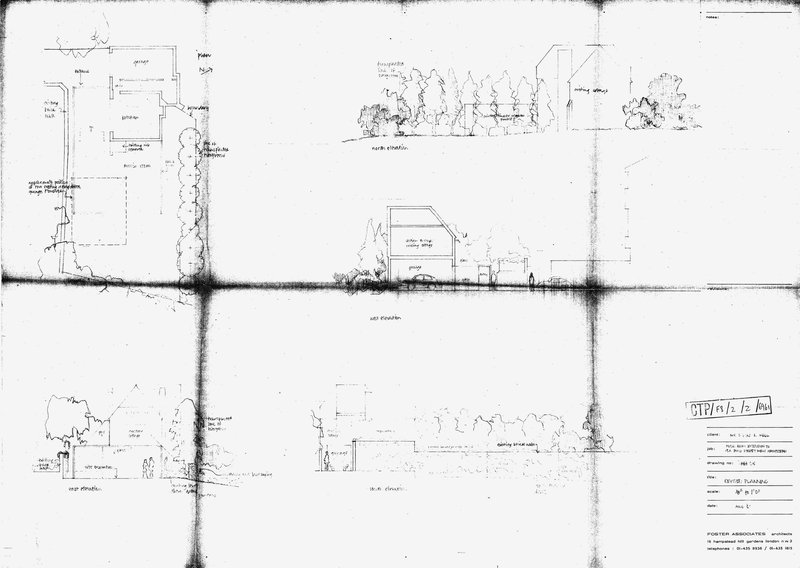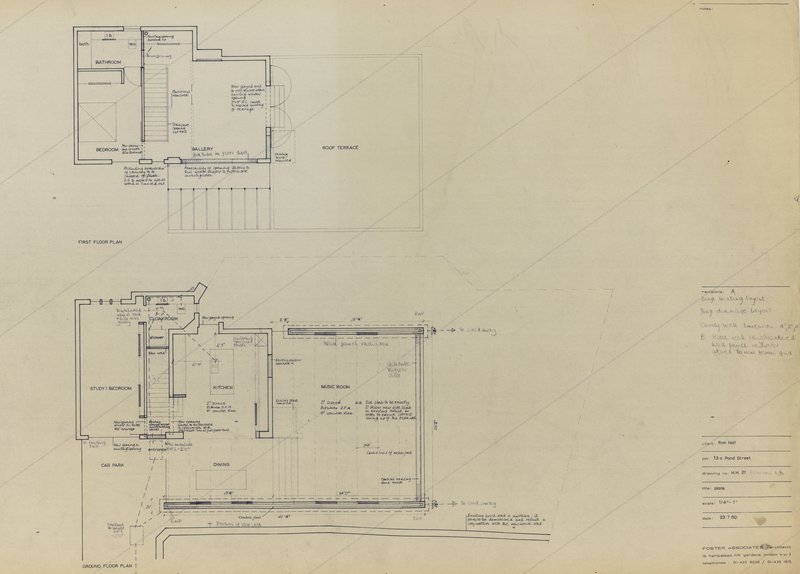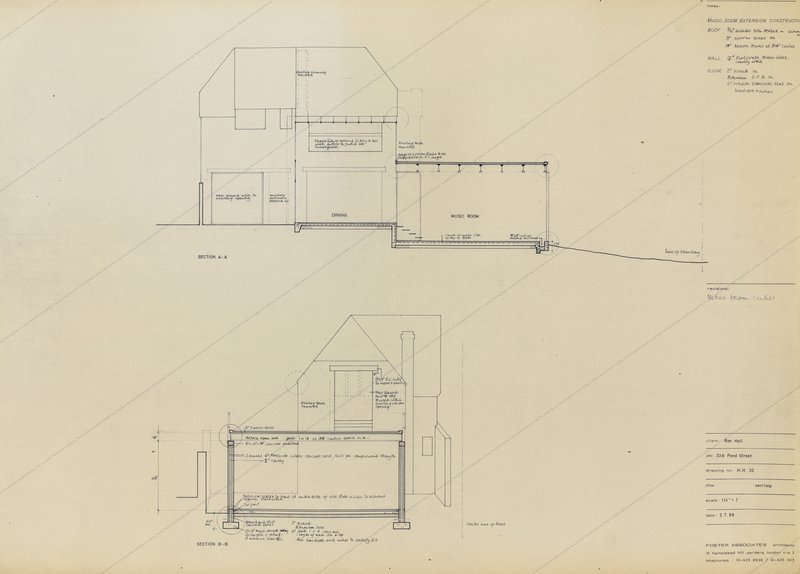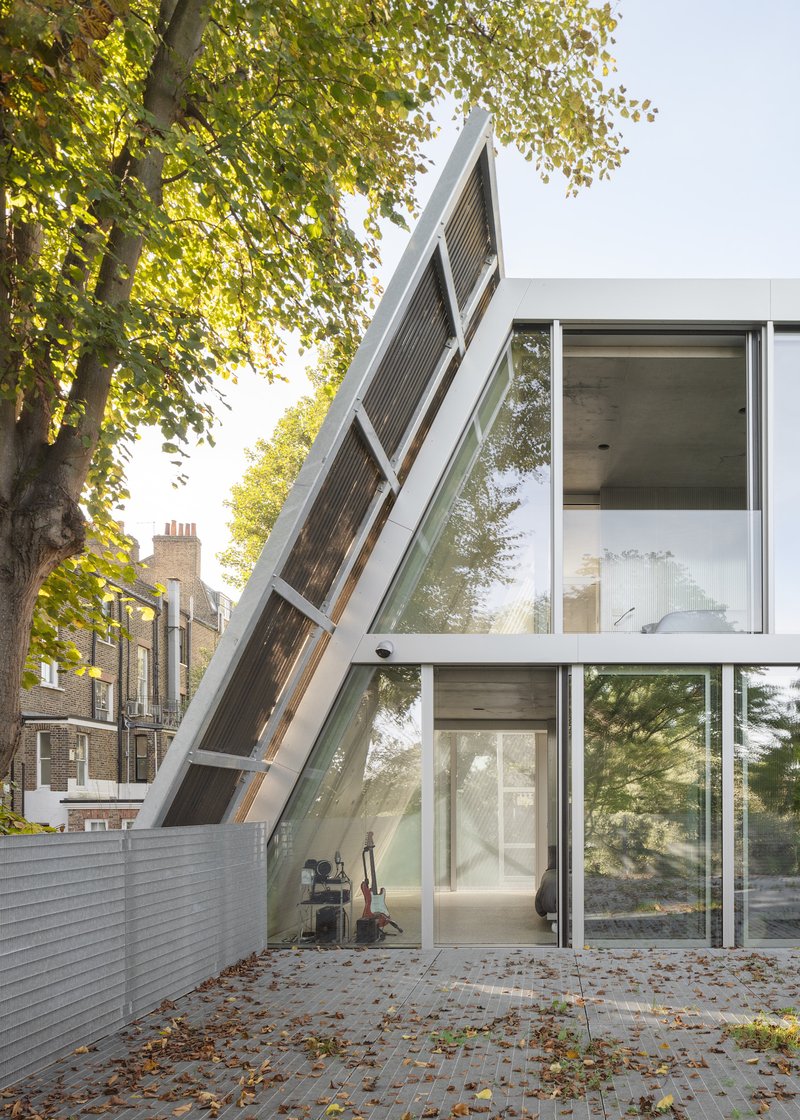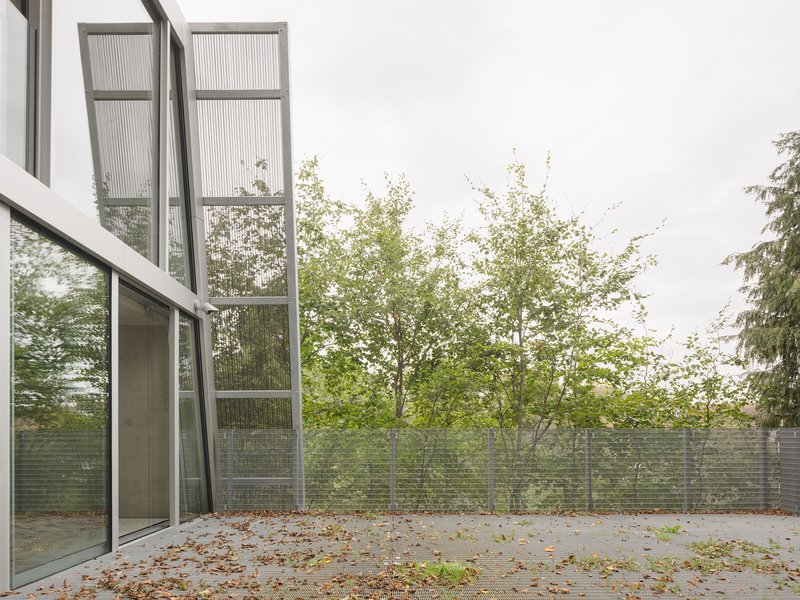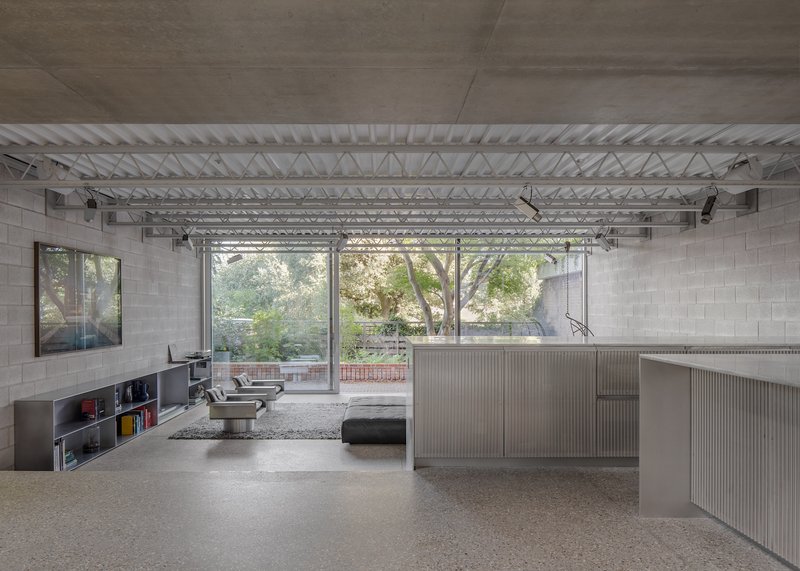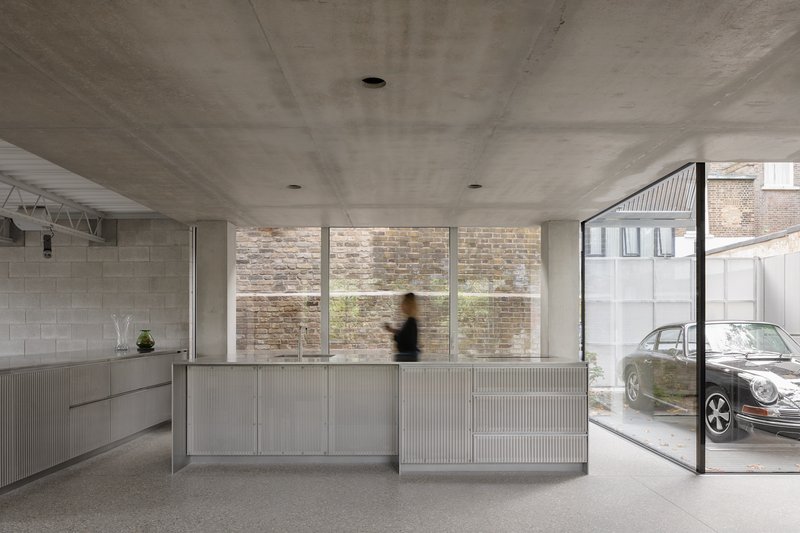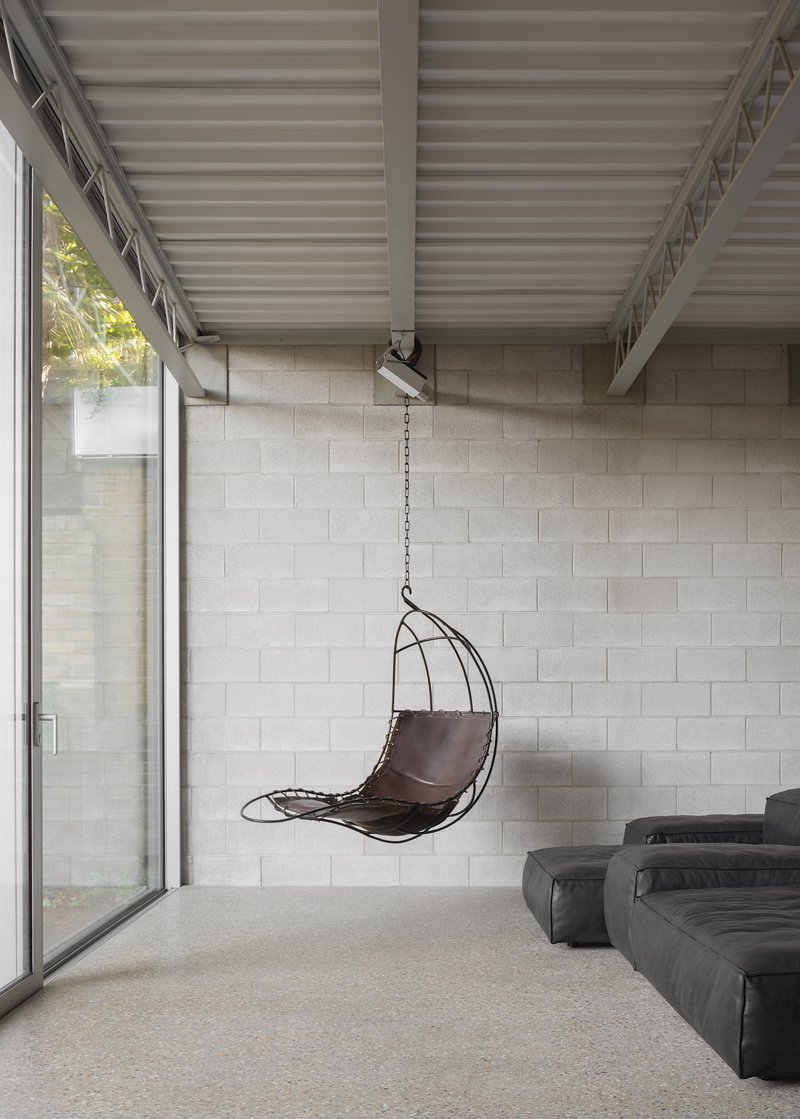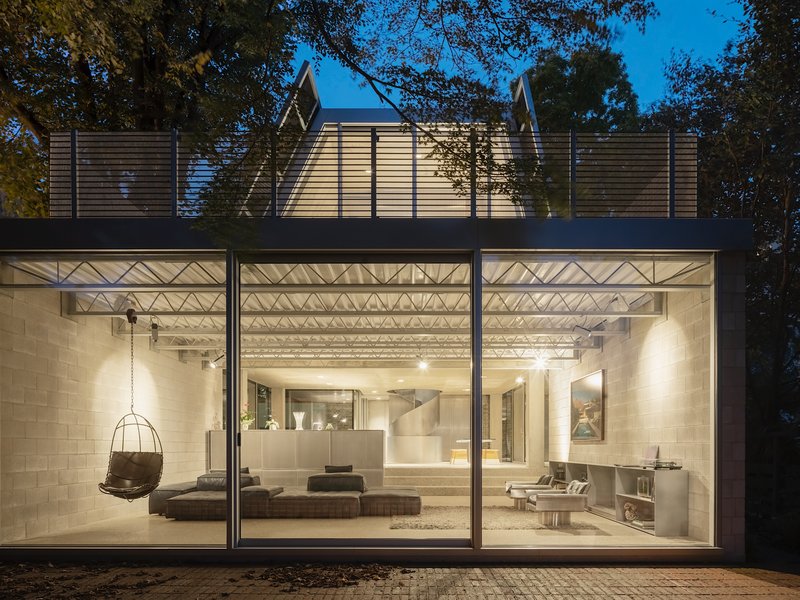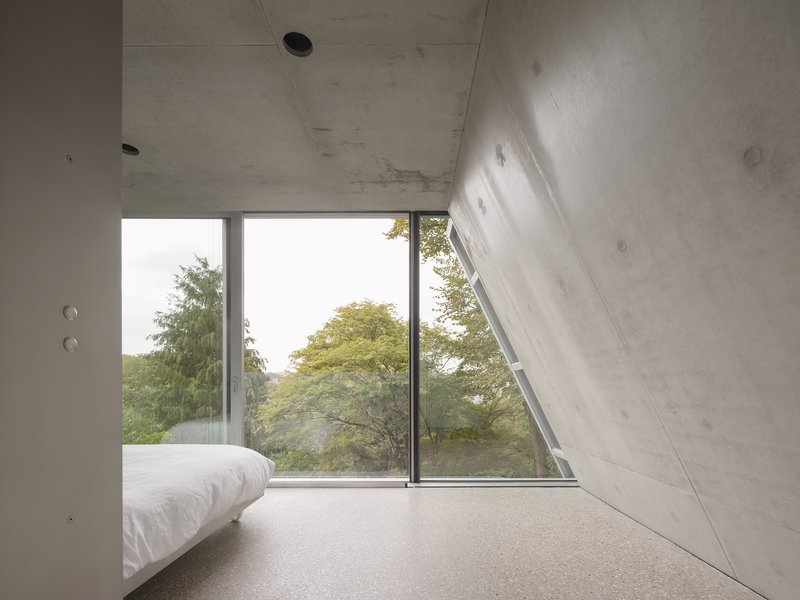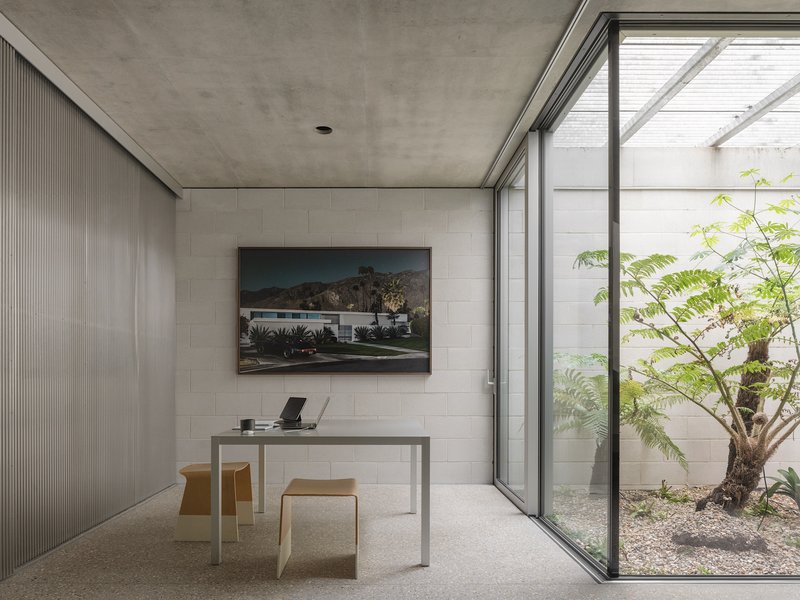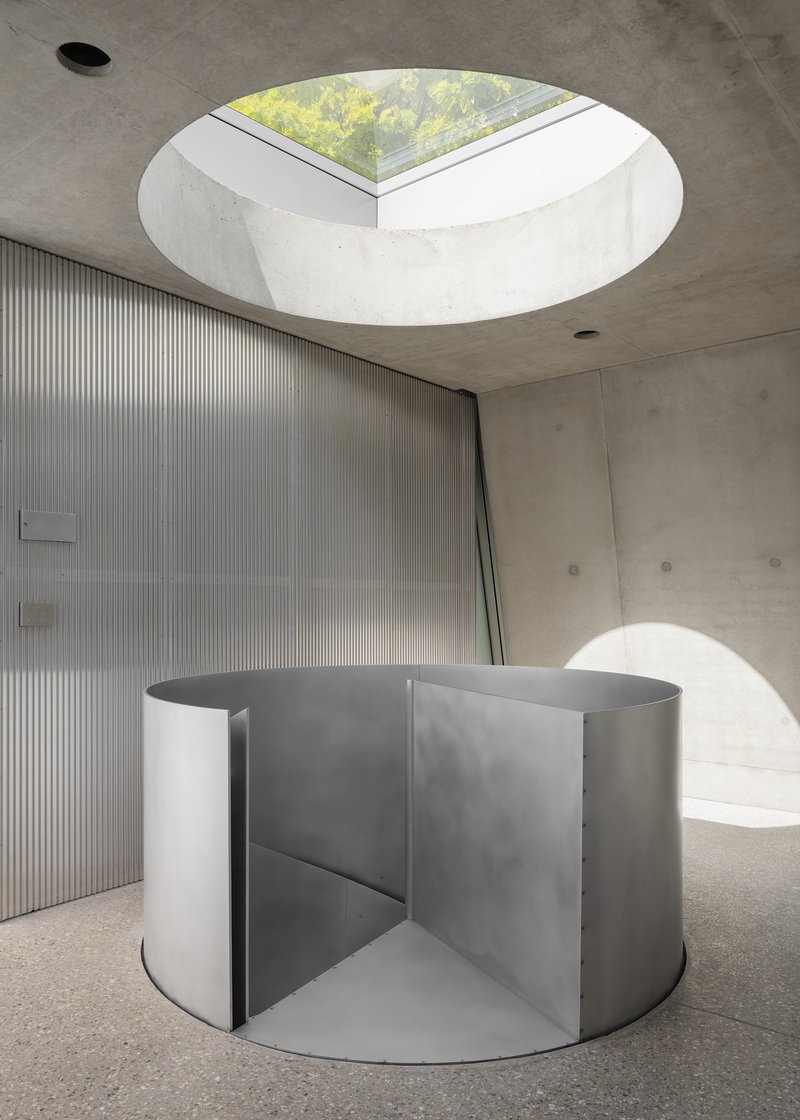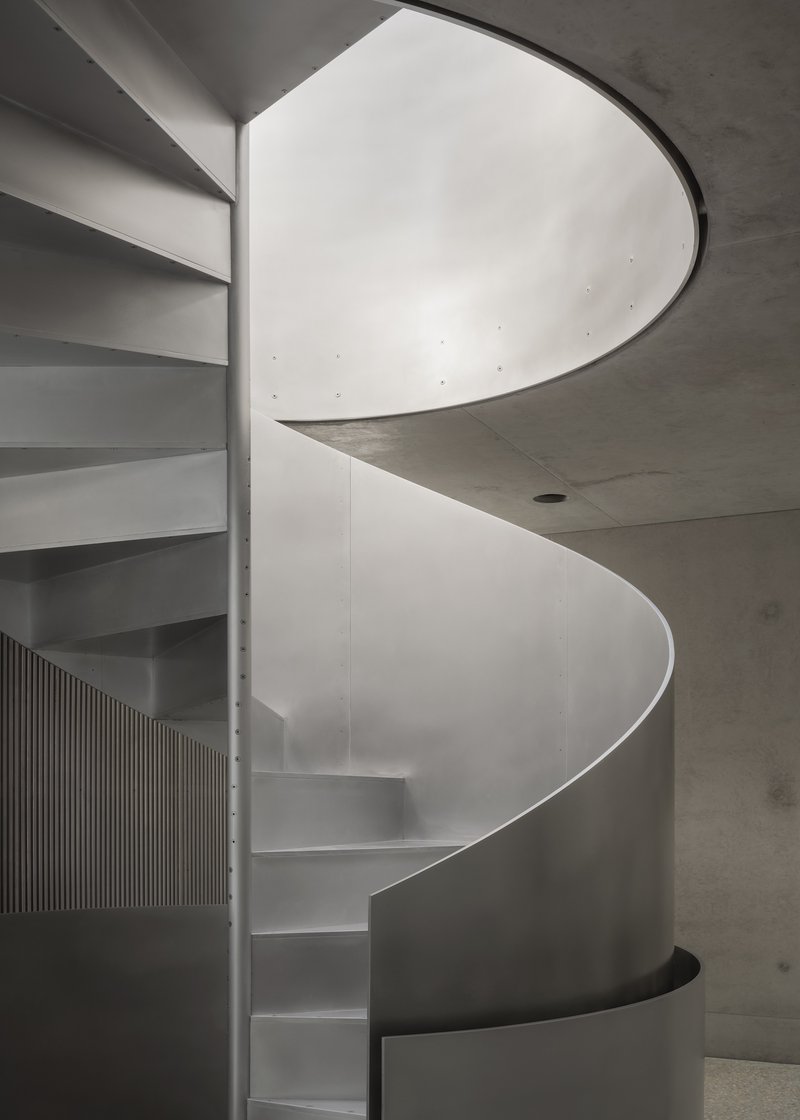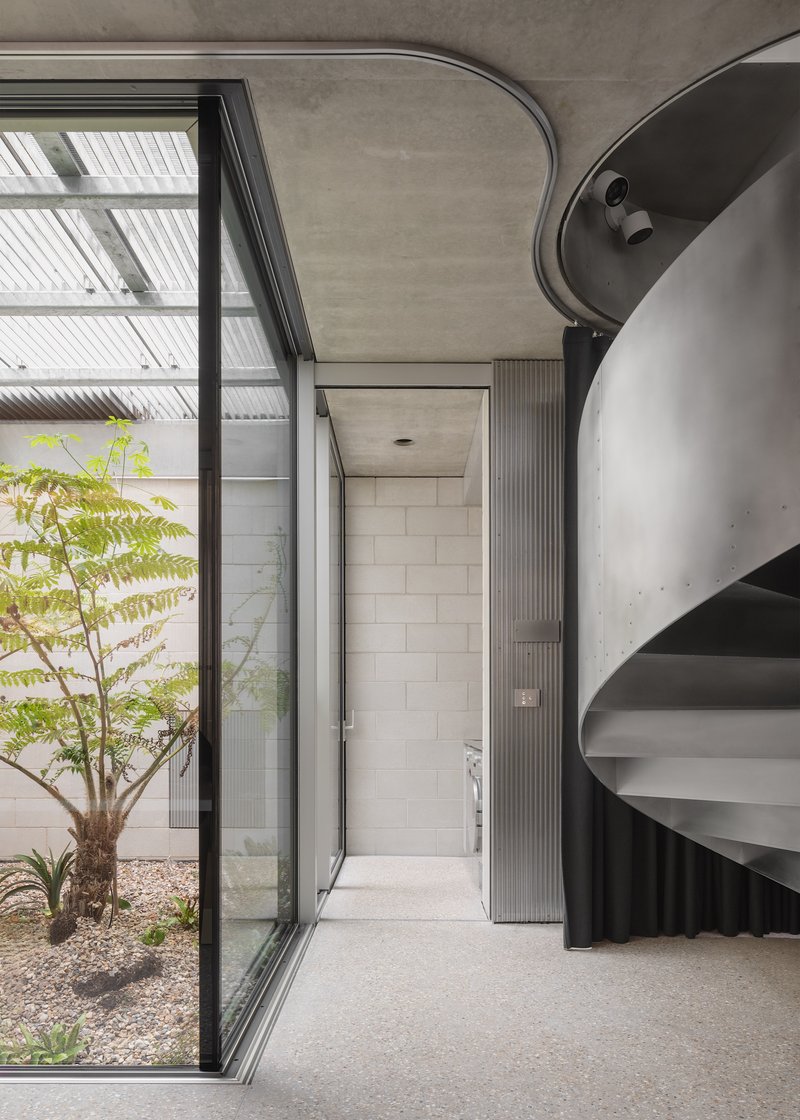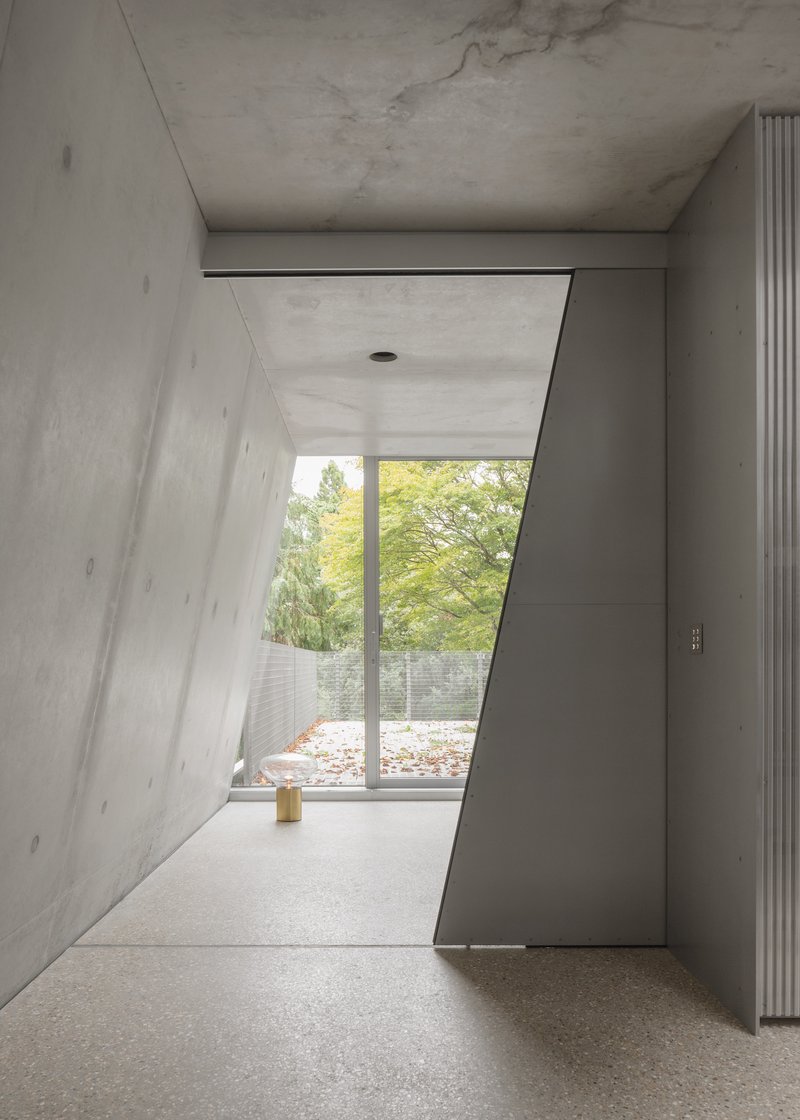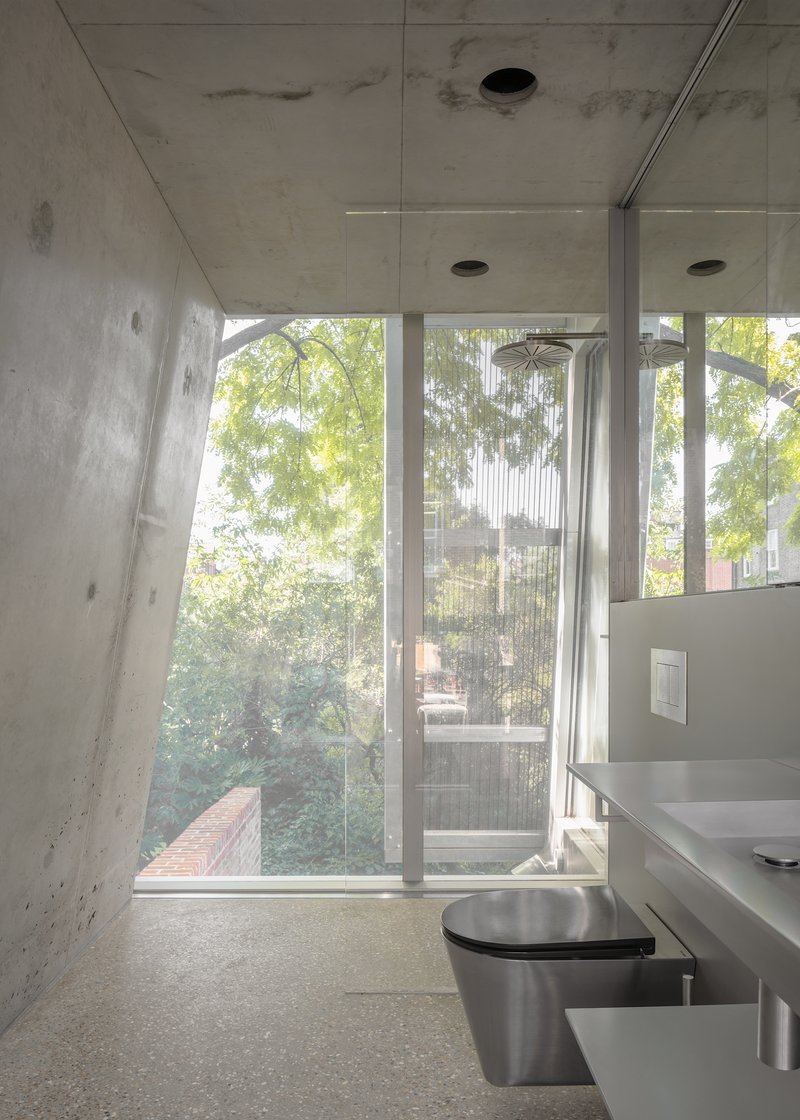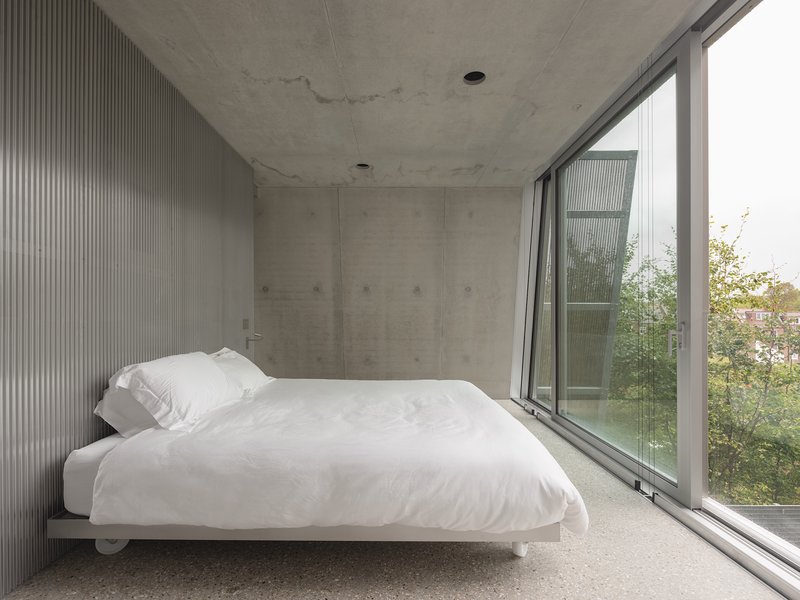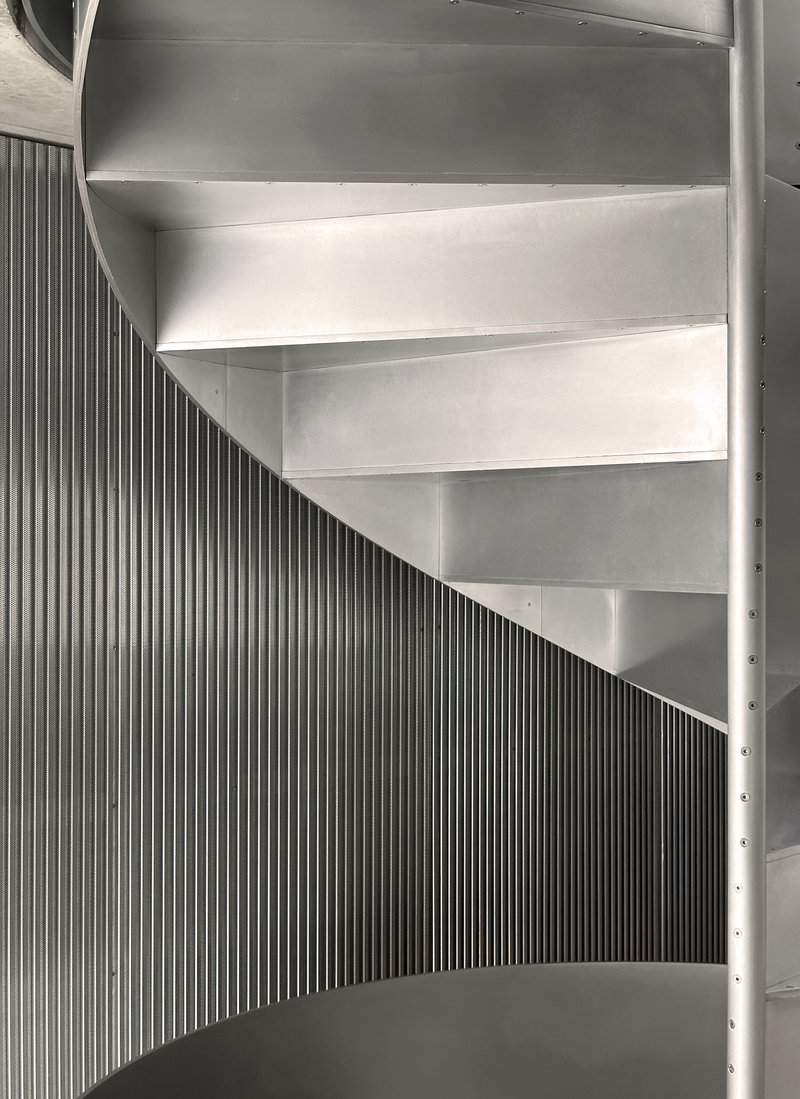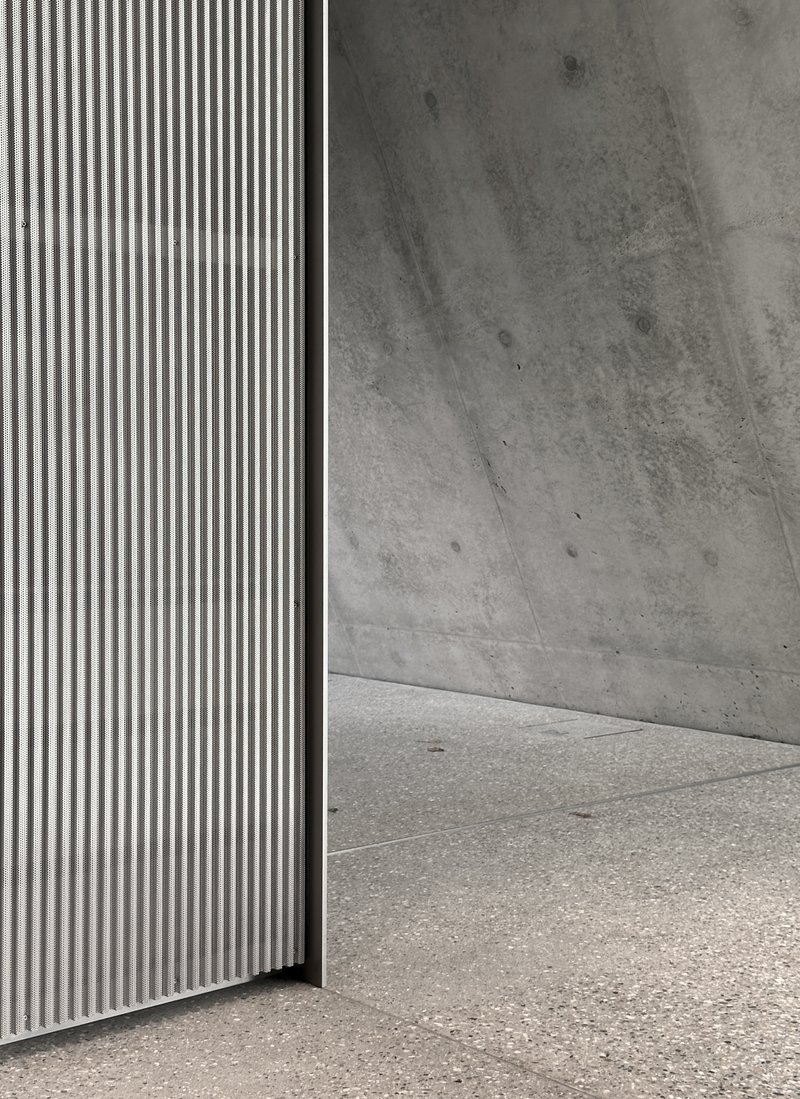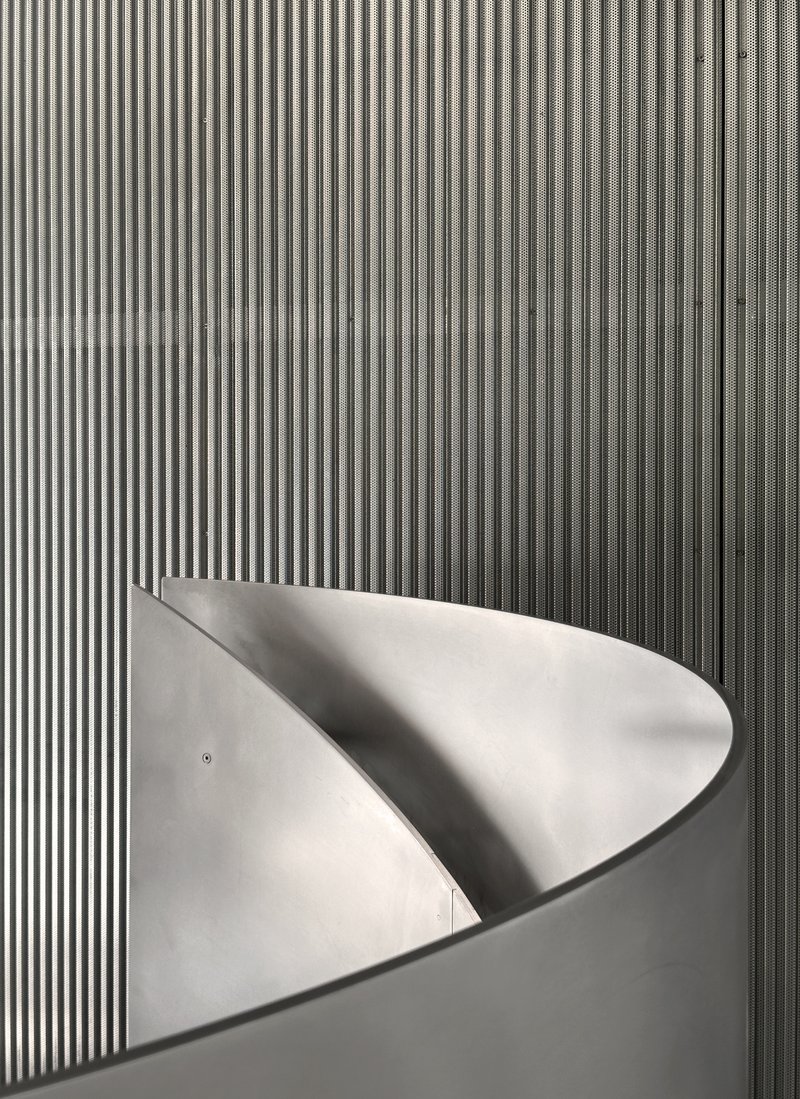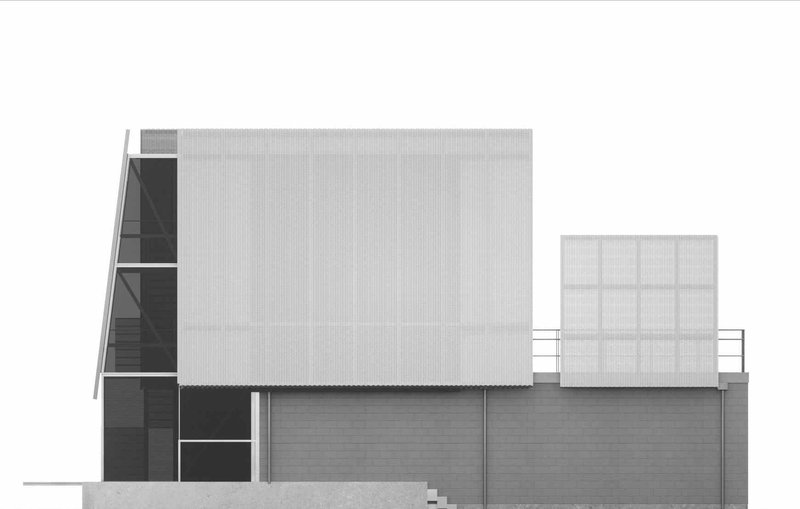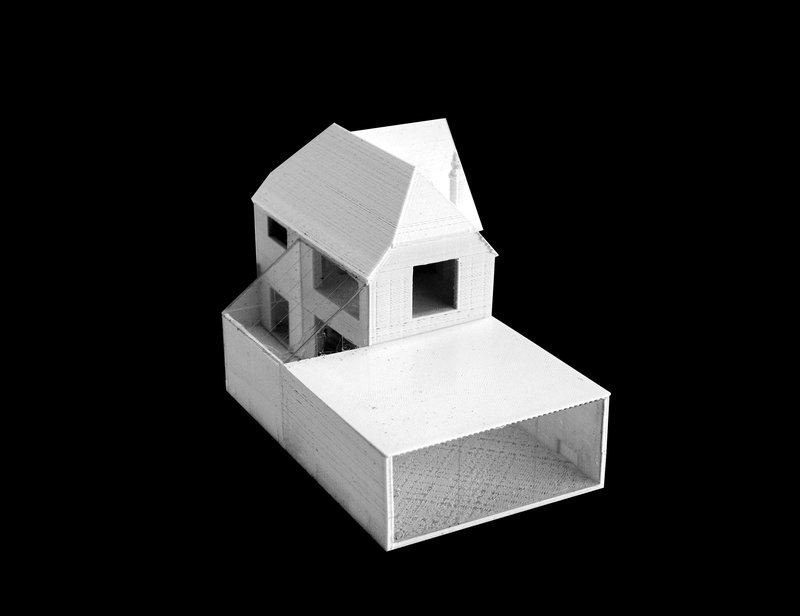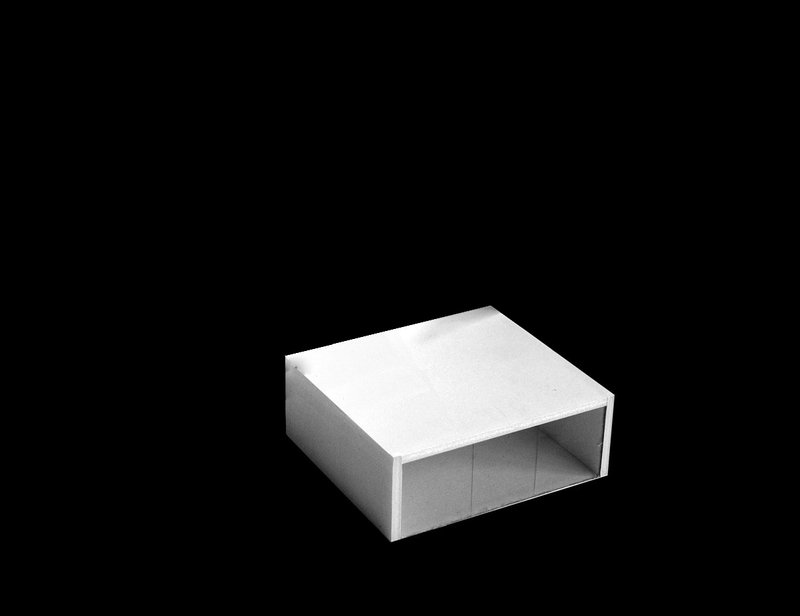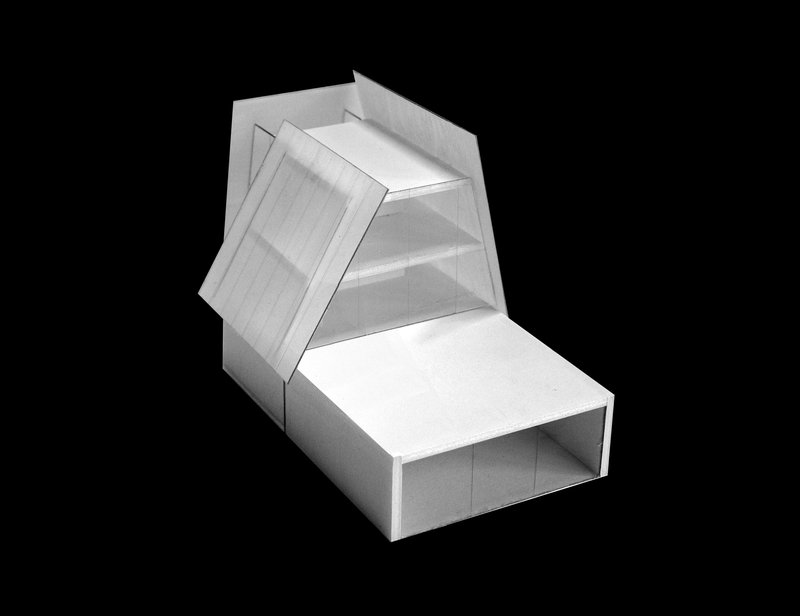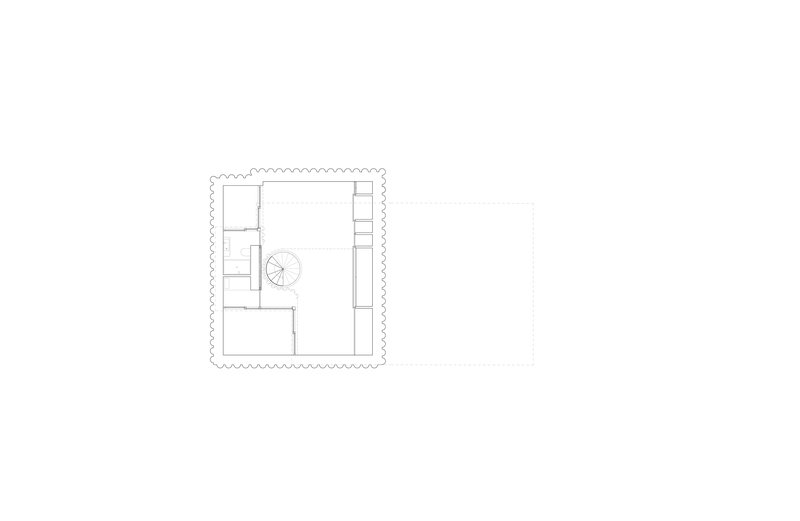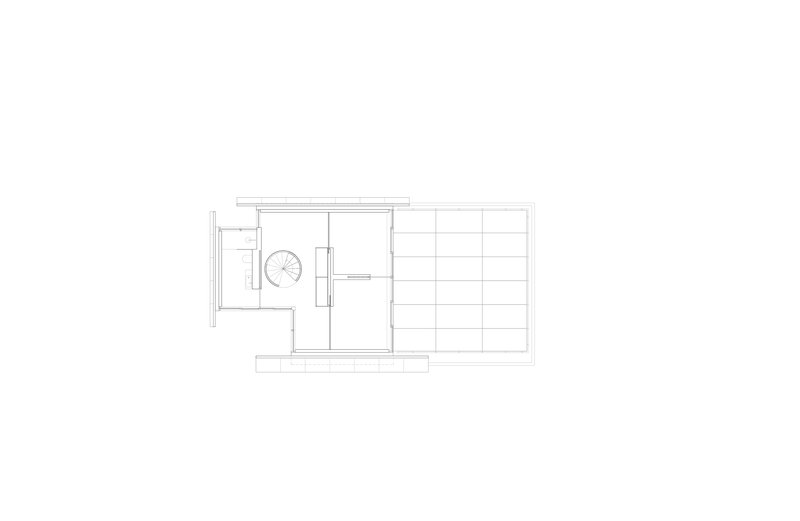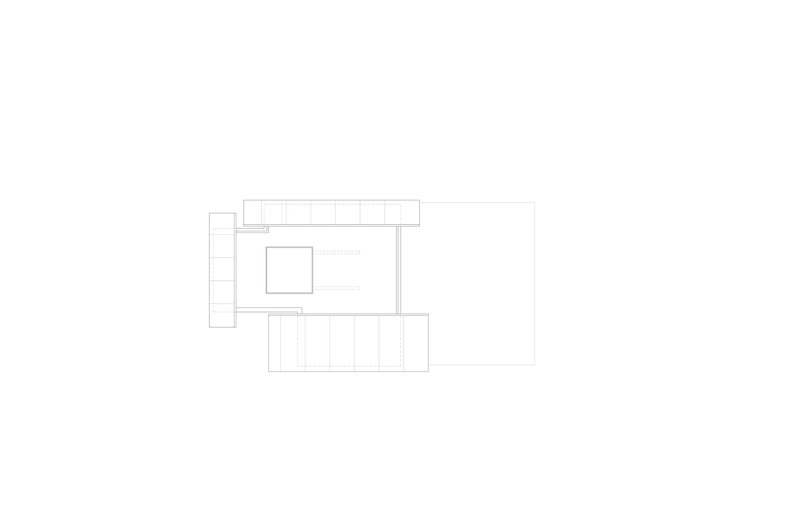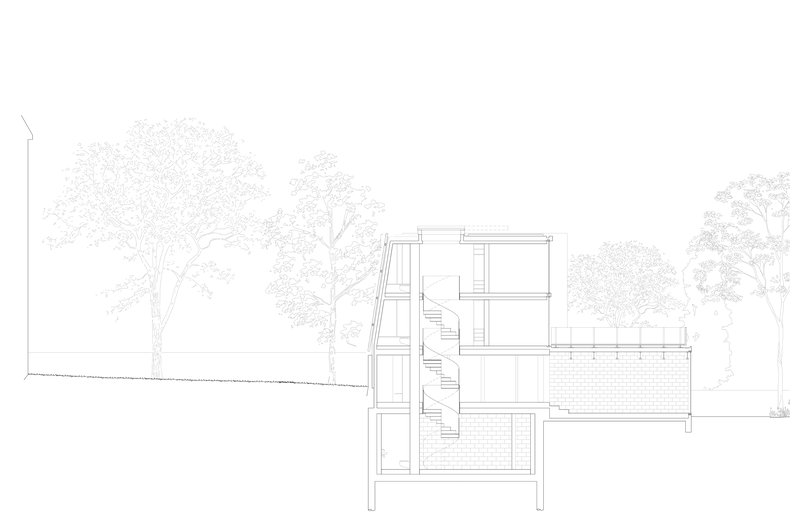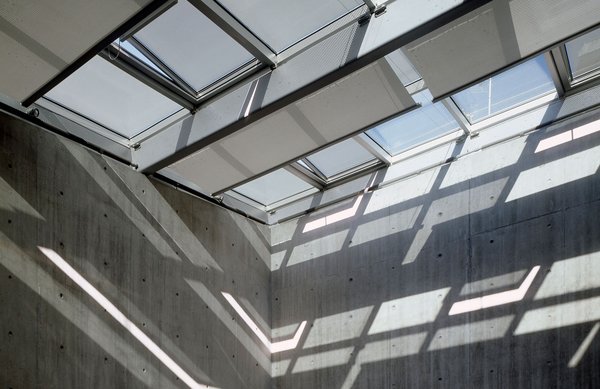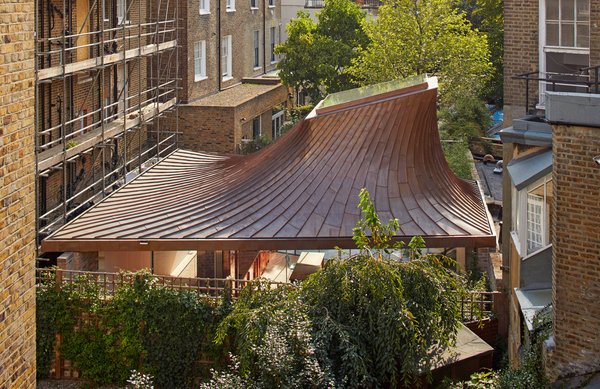Reciprocal House
London, UK, 2018—2023
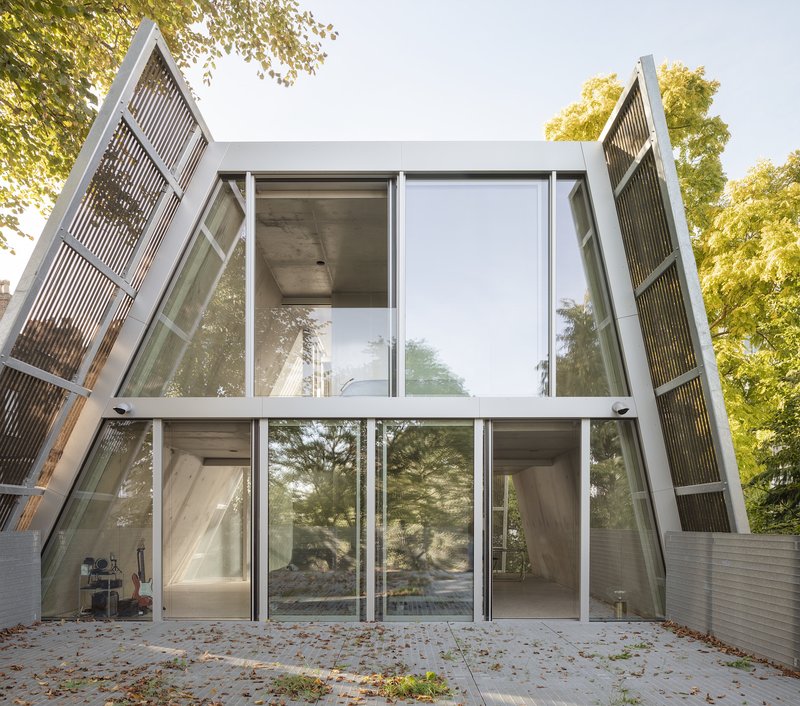
In 1968, the Architect Norman Foster extended a former coach house behind a pub in Hampstead, London, with a lightweight structure of steel, concrete blocks and large span glazing. It is one of the first built structures by Foster & Partners and clearly expresses the approach they would take with an uncompromising simplicity, directness and economy of means. The adjacent coach house was also refurbished at the same time and lived in for over 50 years by the original client.
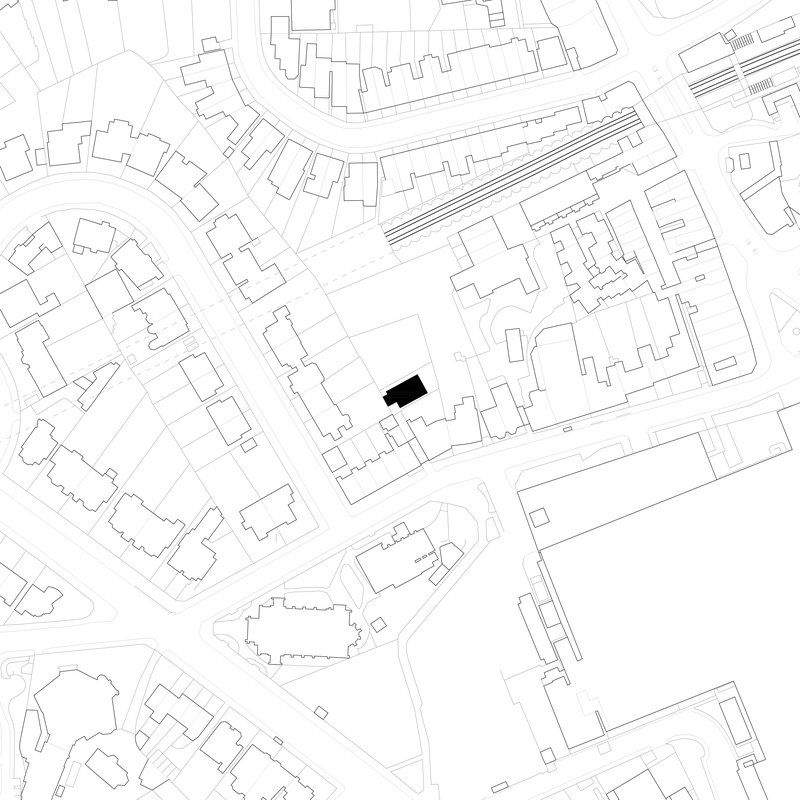
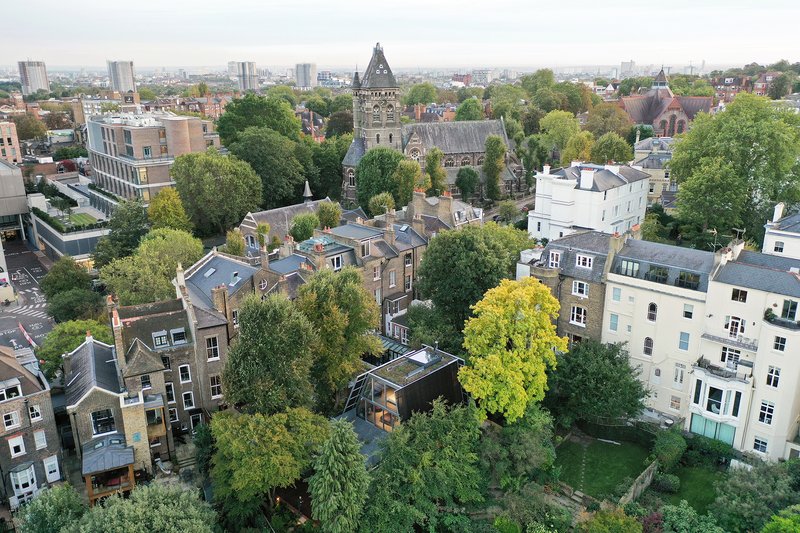
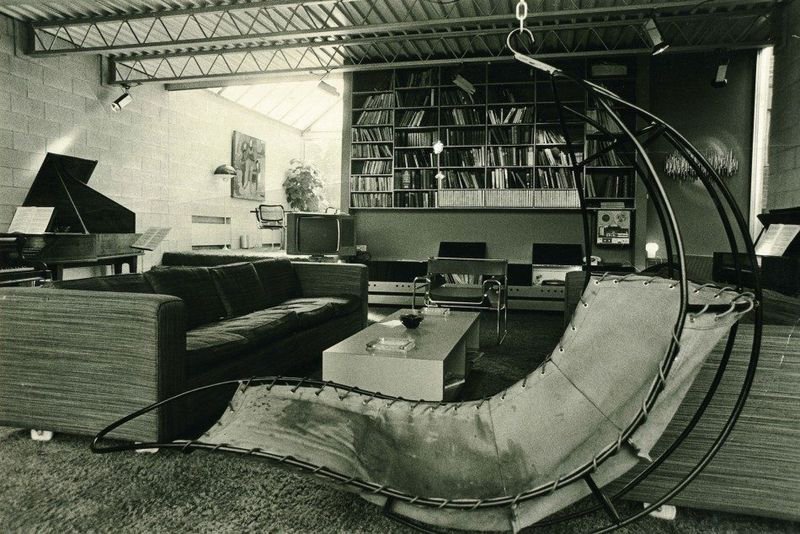
Original Foster Associates extension, 1968
'It’s starting point is the 1960s Foster extension that demonstrated and still shows how space and light can be evoked and brought into the most confined and least likely urban spaces and settings. The reciprocal nature between Foster’s work half a century ago and Gianni Botsford Architects’ today show how this theme can be re-explored to exemplary effect'
Jonathan Glancey, Domus 1089, April 2024
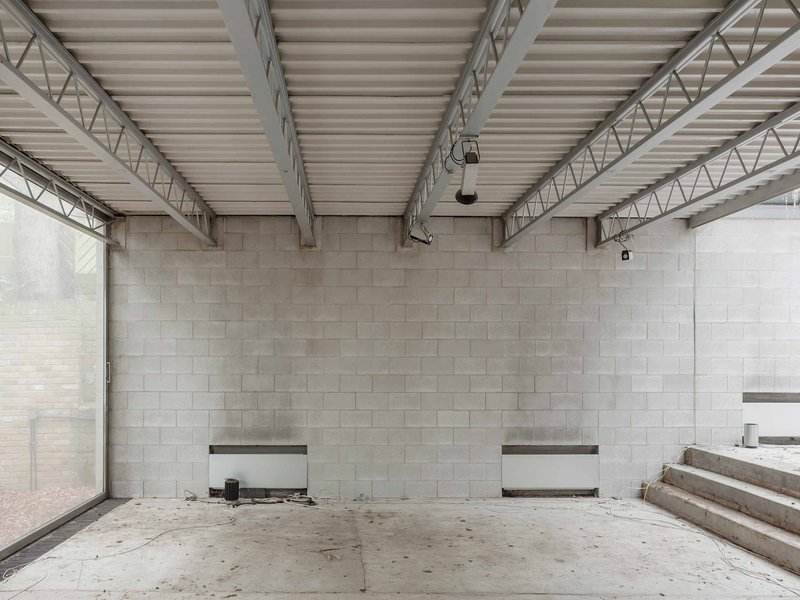
Original Foster Associates extension, 2022
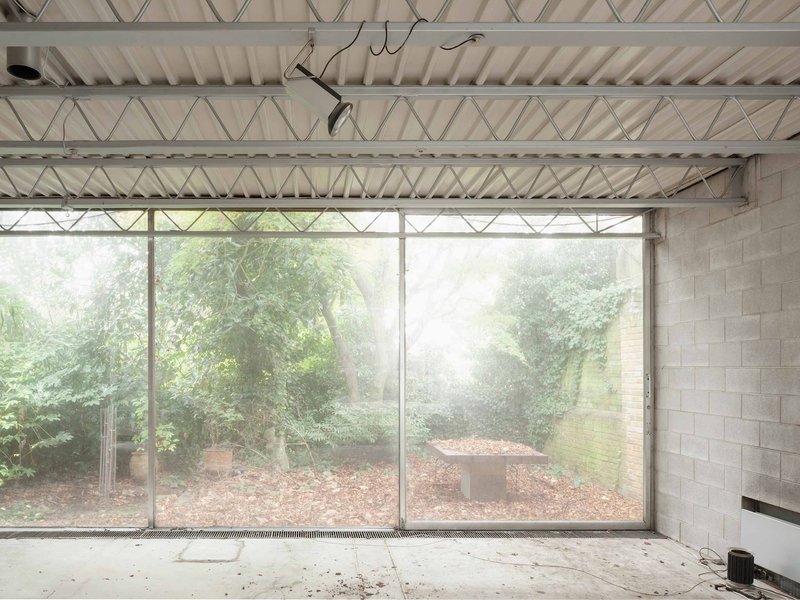
Original Foster Associates extension, 2022
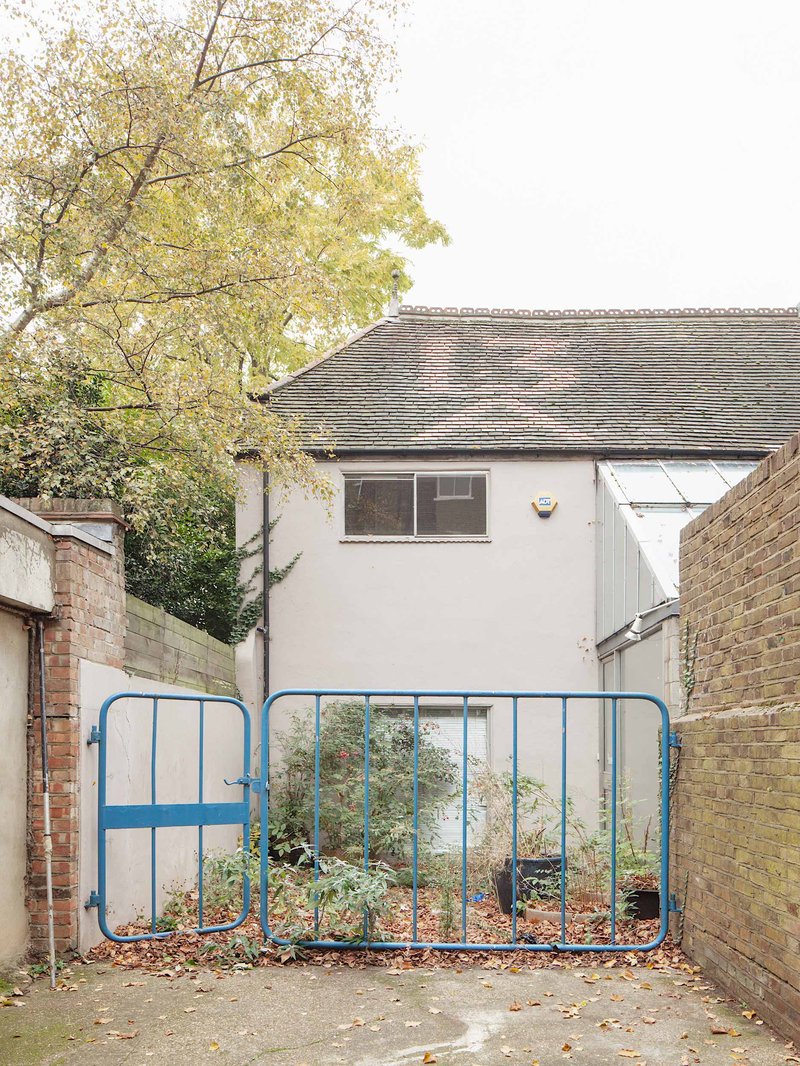

The project retains the original extension, and replaces the coach house, essentially extending the extension. The new extension, on basement, ground, first and second floors, evokes elements of Foster’s treatment of the coach house and the original roof forms with angled facades, but also responds to the extension in its straightforwardness and careful calibration of space. A reciprocal relationship with the architectural character of the Foster extension is formed by the use of a limited palette of materials, an optimised and exposed concrete structure, and veiled views of the context framed by perforated aluminium sail-like roofs that control privacy, as well as preserving a memory of the original building.
The original extension required upgrading both structurally and environmentally and is returned closely to its original state. Inserted into the exposed concrete frame of the new house are highly crafted aluminium interior elements, formed both digitally and manually, that acknowledge an approach to invention represented in the original extension with a singular use of a material and exploration of the opportunities this affords.
The response to the sensitive and overlooked context is carried out through careful and forensic analysis of the site to determine ways of providing privacy for the occupants of the house and neighbours, long views out to the borrowed landscape of back gardens, access to sunlight and daylight, acoustic separation, and security.
Through the process of reinvention, the evolution of the retained, demolished and newly built structures speak to architectural history, layering and respect.

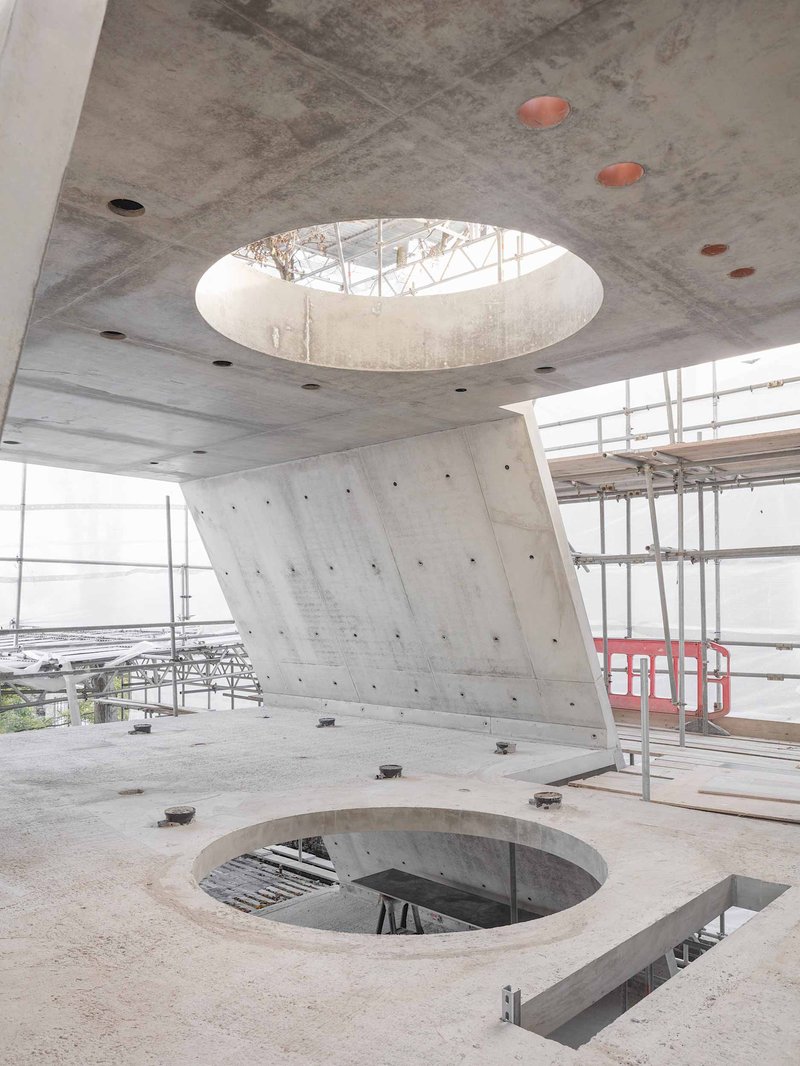
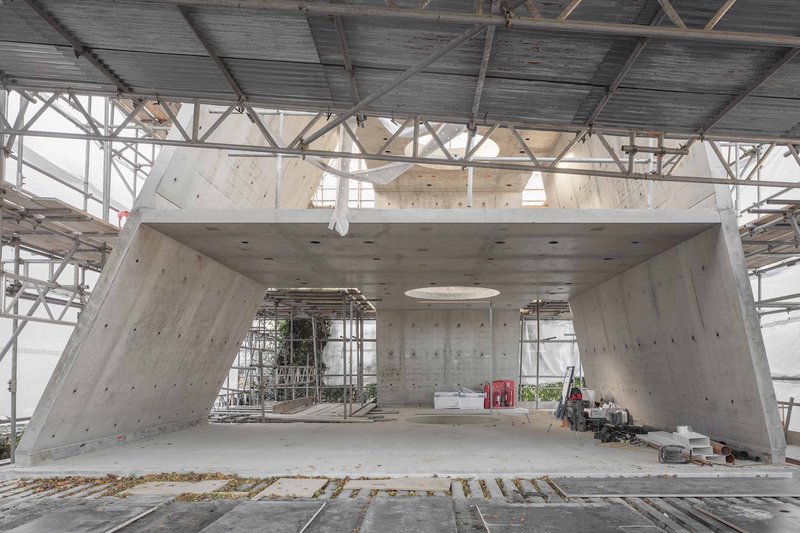
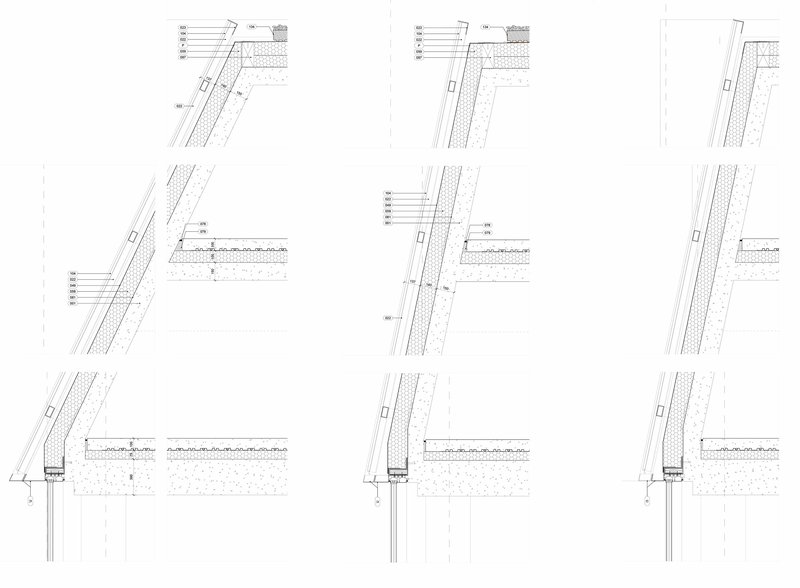
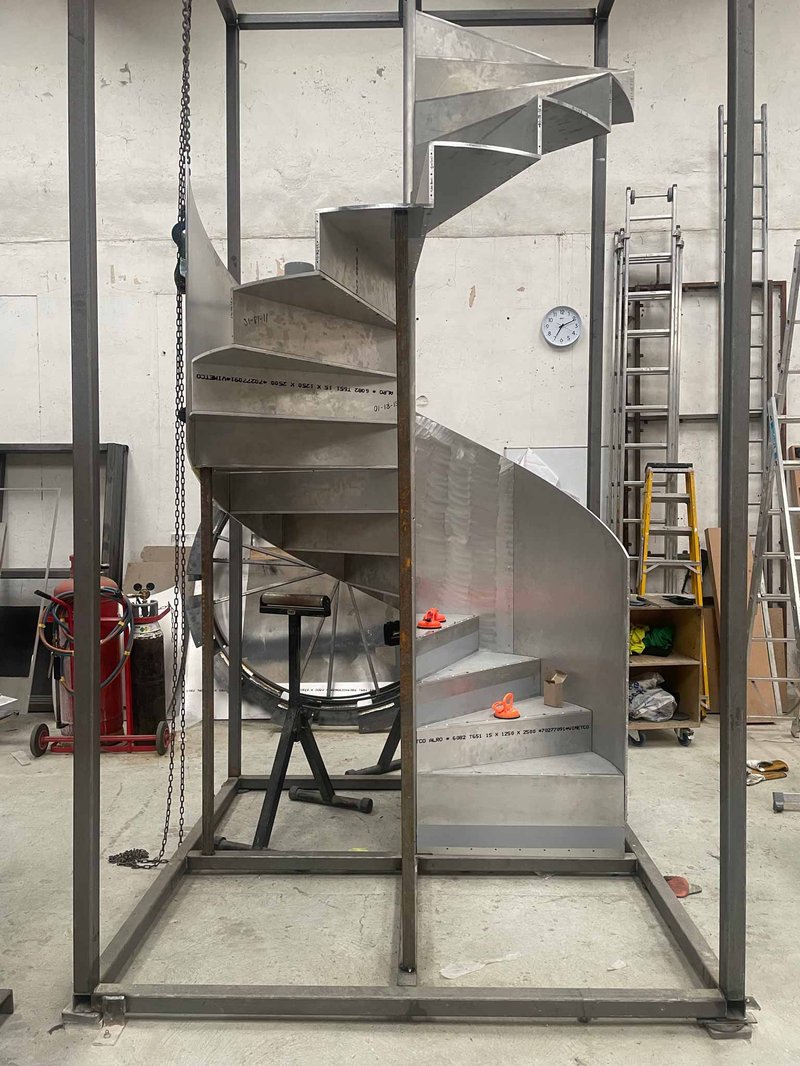
Published in Domus n. 1088, 2024 - Courtesy of Archivio Domus - © Editoriale Domus S.p.A.
